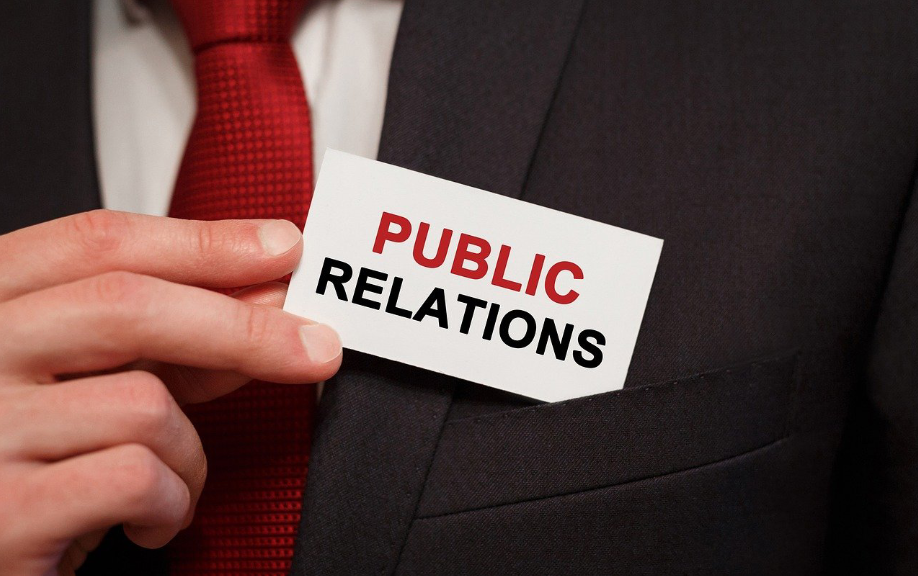Business
Maximizing Success with a Digital Marketing Agency: Importance and Types

In today’s digital landscape, businesses are increasingly turning to digital marketing agencies to gain a competitive edge. These agencies play a crucial role in helping companies navigate the complex world of online marketing, offering expertise in areas such as social media marketing and search engine optimization. As the digital realm continues to evolve, partnering with a skilled digital marketing agency has become essential for businesses looking to expand their online presence and reach their target audience effectively.
A digital marketing agency brings a wealth of knowledge and resources to the table, enabling businesses to implement comprehensive strategies tailored to their specific goals. From developing engaging content to analyzing data-driven insights, these agencies provide valuable support in maximizing online visibility and driving conversions. This article will explore the importance of digital marketing agencies, delve into various types of digital marketing strategies, examine the role of technology in modern marketing practices, and discuss how to build a strong digital marketing team for long-term success.
Contents
The Role of Digital Marketing in Business Growth
In today’s digital landscape, businesses are leveraging digital marketing to drive growth and success. This powerful tool has revolutionized how companies connect with their audience and expand their reach.
Expanding market reach
Digital marketing allows businesses to tap into global markets, transcending geographical boundaries. By utilizing social media platforms, search engine optimization, and targeted advertising, companies can reach a broader audience in real-time. This expanded reach enables businesses to tailor their marketing efforts for maximum impact, connecting with potential customers worldwide.
Enhancing customer engagement
Digital marketing fosters stronger relationships with customers through personalized interactions. Social media platforms offer a direct line of communication, allowing businesses to engage with users through comments, messages, and posts. This engagement humanizes brands, building trust and loyalty. Email marketing campaigns further nurture these relationships by delivering personalized content and promotions to subscribers.
Driving conversions and sales
The ultimate goal of digital marketing is to increase conversions and boost sales. Through targeted campaigns and data-driven strategies, businesses can guide prospects through the sales funnel more effectively. Techniques such as optimizing landing pages, creating compelling calls-to-action, and implementing remarketing strategies help reduce cart abandonment and encourage repeat purchases.
Building brand awareness and loyalty
Digital marketing plays a crucial role in establishing and maintaining brand awareness. By consistently delivering valuable content across various channels, businesses can position themselves as industry leaders and build trust with their audience. This approach not only attracts new customers but also fosters loyalty among existing ones, turning them into brand advocates who actively promote and recommend the business to others.
Key Digital Marketing Strategies for Success
Inbound Marketing Techniques
Inbound marketing has become a cornerstone of successful digital marketing strategies. This approach focuses on attracting customers through valuable content and experiences tailored to their needs. By creating and sharing relevant content, businesses can draw potential customers to their brand organically. The key to effective inbound marketing lies in understanding the customer journey and providing value at each stage.
• Create high-quality, persona-driven content
• Optimize for search engines to improve visibility
• Utilize social media to amplify reach and engagement
Personalization and Targeting
In today’s digital landscape, personalization has become an expectation rather than a luxury. Consumers demand tailored experiences, with 71% expecting personalized interactions from companies. By leveraging data and AI-driven insights, businesses can create highly targeted campaigns that resonate with their audience.
• Analyze customer data to understand preferences and behaviors
• Implement AI-powered personalization tools
• Deliver customized content and recommendations
Multi-channel Marketing Approach
A multi-channel marketing strategy allows businesses to engage with customers across various platforms, creating a cohesive brand experience. This approach ensures that your message reaches your audience wherever they are most active.
• Integrate marketing efforts across email, social media, and other channels
• Maintain consistent branding and messaging across all platforms
• Track performance across channels to optimize strategies
Content Marketing and Storytelling
Compelling content and storytelling have become essential in capturing audience attention and building brand loyalty. By creating engaging narratives, businesses can forge emotional connections with their customers.
• Develop a content strategy aligned with customer interests
• Use storytelling techniques to make content more memorable
• Incorporate various content formats, including video and interactive media
Leveraging Technology in Digital Marketing
In today’s digital landscape, businesses are harnessing cutting-edge technologies to revolutionize their marketing strategies. By leveraging innovative tools and platforms, companies can enhance customer engagement, streamline operations, and drive growth.
Artificial Intelligence and Machine Learning
AI and machine learning have transformed digital marketing by enabling data-driven decision-making and personalized customer experiences. These technologies analyze vast amounts of data to identify patterns and trends, allowing marketers to:
• Optimize campaigns in real-time
• Predict customer behavior
• Deliver targeted content and recommendations
Marketing Automation Tools
Marketing automation has become essential for businesses looking to increase efficiency and ROI. These tools offer numerous benefits:
• Increased sales productivity
• Reduced marketing overhead
• Improved lead nurturing and qualification
• Enhanced customer journey mapping
Chatbots and Virtual Assistants
Chatbots and virtual assistants have revolutionized customer support and engagement. They offer:
• 24/7 availability
• Instant responses to customer inquiries
• Personalized interactions based on customer data
• Cost-effective solutions for handling routine queries
Augmented and Virtual Reality in Marketing
AR and VR technologies are opening new avenues for immersive brand experiences:
• Virtual product try-ons
• Interactive storytelling
• Gamified marketing campaigns
• Virtual showrooms and events
By embracing these technologies, digital marketing agencies can help businesses create more engaging, efficient, and effective marketing strategies that drive results in an increasingly competitive digital landscape.
Building a Strong Digital Marketing Team
A robust digital marketing team is crucial for maximizing success in today’s competitive landscape. By assembling the right mix of talent and fostering collaboration, businesses can achieve their marketing goals effectively.
Essential roles and skills
A successful digital marketing team comprises various key roles:
• Project manager: Acts as a liaison between the marketing team and other departments
• Strategist: Develops comprehensive marketing plans and ensures brand consistency
• Content writer: Creates engaging, SEO-optimized content for various platforms
• Graphic designer: Produces visually appealing elements to enhance brand identity
• SEO specialist: Optimizes digital content for search engines
• PPC manager: Oversees paid advertising campaigns
• Front-end developer: Implements technical aspects of digital marketing initiatives
• Email marketing specialist: Manages email campaigns and automation strategies
• Social media manager: Handles social media presence and community engagement
Training and development
Investing in employee growth has a significant impact on retention and performance. According to a LinkedIn report, 94% of employees would stay longer in companies that invest in their professional development. To foster a culture of learning:
• Communicate the value of training programs to leadership and employees
• Develop clear objectives aligned with organizational goals
• Offer diverse learning opportunities, including leadership and management courses
• Encourage exploration of training topics for personal development
Collaboration with other departments
Interdepartmental collaboration is essential for achieving shared objectives and breaking down silos. To promote effective collaboration:
• Establish clear goals that require cross-functional teamwork
• Foster trust and open communication among team members
• Create opportunities for knowledge sharing and regular interaction
• Recognize and reward successful collaborative efforts
Outsourcing vs. in-house expertise
When deciding between building an in-house team or outsourcing, consider factors such as:
• Cost-effectiveness: Agencies often offer services at a lower cost due to economies of scale
• Expertise: Agencies provide access to a diverse range of skills and experience
• Flexibility: Outsourcing allows for scaling marketing efforts as needed
• Control: In-house teams offer more direct oversight and alignment with company culture
By carefully considering these aspects, businesses can build a strong digital marketing team that drives success and achieves their marketing objectives.
Conclusion
The realm of digital marketing has undergone a significant transformation, reshaping how businesses connect with their audience and achieve growth. From expanding market reach to enhancing customer engagement, digital marketing strategies have become essential tools for companies looking to thrive in the online landscape. The integration of cutting-edge technologies like AI, machine learning, and marketing automation has further amplified the impact of these strategies, enabling businesses to deliver personalized experiences and make data-driven decisions.
Building a strong digital marketing team, whether in-house or through outsourcing, is crucial to implement these strategies effectively. By combining the right mix of skills, fostering collaboration, and investing in ongoing training and development, businesses can create a robust foundation for their digital marketing efforts. As the digital landscape continues to evolve, staying adaptable and embracing new technologies and approaches will be key to maximizing success in the ever-changing world of digital marketing.
FAQs
1. How can I establish a successful digital marketing agency?To start a successful digital marketing agency, conduct thorough market research to understand your niche, develop a comprehensive service offering, create a detailed business plan, establish a strong brand and online presence, build a capable team, and focus on growth strategies to expand your business.
2. Why is digital marketing crucial for business success?Digital marketing is essential for business success because it allows companies to reach their target audiences more effectively, drive sales, and boost revenue. Utilizing strategies such as social media marketing, content marketing, search engine optimization (SEO), and pay-per-click (PPC) advertising helps businesses engage, convert, and retain customers.
3. What strategies can maximize the effectiveness of digital marketing?To maximize the effectiveness of digital marketing, it’s important to understand your customers deeply, create compelling and relevant content, consistently optimize your website for SEO and conversions, establish a robust presence across various social media platforms, produce mobile-friendly content, and integrate your marketing efforts across multiple platforms, including Google My Business.
4. What are the advantages of hiring a digital marketing agency?Hiring a digital marketing agency brings several benefits, including increased efficiency in marketing operations, access to specialized expertise, and potentially better results. When choosing an agency, it’s crucial to define your goals clearly, select the right agency that aligns with your needs, establish clear communication lines, and provide regular feedback to ensure continuous improvement and efficiency in your marketing efforts.
Post Disclaimer
The information contained in this post is for general information purposes only. The information, including images, is provided by Maximizing Success with a Digital Marketing Agency: Importance and Types, and while we endeavor to keep the information accurate, we make no representations or warranties of any kind, express or implied, about the completeness, accuracy, reliability, suitability, or availability with respect to the website or the information, products, services, or related graphics contained on the post for any purpose. Please note that images used in this post may be included for entertainment purposes and do not necessarily represent factual or real-life scenarios.
Business
AML Solutions – A Prevention Against the Disguise of Illegal Money
AML solutions are a set of rules designed to prevent money laundering and financing of terrorism. Compliance is crucial to maintain the credibility of businesses.

The purpose of anti-money laundering regulations and standards is to stop illegal funds from being passed off as genuine. The process of disguising illegal funds, narcotics, and fraud as originating from a legitimate source is known as money laundering.
Additionally, AML solutions are tactics used by financial institutions and enterprises to stop theft and illicit activity. By adhering to the guidelines established by the government, these solutions support the integrity of the companies and assist the organizations in identifying possible dangers from the clients. These three steps make up money laundering: placement, layering, and integration.
Contents
Significance of AML Solutions in Financial Institutions
These solutions are highly recommended to fight financial thefts and maintain the integrity of businesses. These can hold the customers accountable before committing the crime. Here is why the AML solution is crucial:
- These are used to prevent fraud by detecting the suspicious activities of the customers before they harm the economy.
- These help in maintaining regulatory compliance. If the organizations do not abide by the regulations, it can result in a heavy sanction or the loss of reputation.
- There are several organizations which can be seen involved in money laundering. These solutions help maintain the credibility and reliability of the businesses.
- They help prevent the risks beforehand by keeping a check on the customer’s activities.
Global AML Regulations and Standards
There are several rules and standards set by the government and the higher authorities. These solutions are not the same for every country. It depends on the laws and crime rate of every other country. Some of the major AML solution frameworks are:
- The Financial Action Task Force (FATF)
FATF is a governmental body that provides rules and regulations for averting the financing of terrorism and money laundering. This AML service provider sets the standards that are meant to secure businesses and monitor the compliance of the organizations towards it. 40 recommendations by FATF cover everything from customer’s due diligence to reporting of suspicious transactions. The institutions that fail to comply with the rules provided by FATF, will be added to their blacklist and their reputation will be at risk.
- The Bank Secrecy Act
In the USA, companies are required to follow the set standards by the Bank Secrecy Act. It provides effective solutions that can combat money laundering by regularly identifying the customers, and their suspicious activities, and maintaining useful records for the future.
- The European Union
This is an industry-leading AML solution that provides its own rules and regulations to prevent the financing of terrorism. It allows the member states to set their laws and regulations to fight money laundering. It has tackled several money laundering cases effectively by adapting itself according to the prevailing risks.
- The Financing Crimes Enforcement Network
It is a department in the US that passes several laws including AML screening solutions for financial institutions. It plays a crucial role in maintaining the integrity of the organizations and preventing them from losing their reputation.
- The United Nations
The UN is also an AML solution provider that plays a vital role in mitigating the risk of money laundering. There are many other frameworks like the IMF and the World Bank that support the United Nations and strengthen the laws to diminish money laundering and other financial thefts.
Difference Between AML and CTF
Despite being two distinct concepts, they both aim to prevent financial theft. As previously said, AML relates to the disclosure of black money that appears to be lawful and utilized in a legitimate economy. Its goal is to stop criminals from passing off illicit funds as legitimate in the economy. Drug money, corruption, and tax evasion are among its goals.
Conversely, CTF (Counter-Terrorist Financing) stops money from going to terrorist groups that carry out violent acts or have the potential to harm the economy. Its primary goal is to stop terrorist groups from receiving funding to stop extremist operations.
Conclusion
Money laundering can not be overstated when it comes to the security of financial institutions. Compliance with AML solutions is highly recommended because it can affect the integrity of the businesses. Not only financial institutions are compelled to comply with the rules but it is also crucial for other organizations as well to maintain their reliability in the market.
Post Disclaimer
The information contained in this post is for general information purposes only. The information, including images, is provided by AML Solutions - A Prevention Against the Disguise of Illegal Money, and while we endeavor to keep the information accurate, we make no representations or warranties of any kind, express or implied, about the completeness, accuracy, reliability, suitability, or availability with respect to the website or the information, products, services, or related graphics contained on the post for any purpose. Please note that images used in this post may be included for entertainment purposes and do not necessarily represent factual or real-life scenarios.
Business
What Businesses Can Learn From the World’s Most Memorable PR Disasters

Marketing is a complex world, and public relations (PR) often presents itself as a precarious balance – a double-edged sword, if you will. It bears an uncanny power, one that can not only sculpt brands and cultivate customer fidelity, but also, when mismanaged, ignite disastrous events, scarring reputations for an excruciatingly long stretch.
To navigate this intricate maze, it behoves us to dissect and glean insights from past PR catastrophes. Let’s time travel through some of history’s most unforgettable PR calamities, and distil potent lessons to bolster your brand’s communication tactics and crisis management strategies.
Contents
The Exxon Valdez Oil Spill: A Tale of Environmental Woe
The year 1989 marked one of the most catastrophic environmental tragedies our planet has witnessed. The Exxon Valdez oil spill. A tanker met with a calamitous incident and ran aground in the serene Prince William Sound, Alaska, spewing a staggering 11 million gallons of crude oil into the ocean’s lap. Public ire was directed at Exxon’s languid and ineffective response. Initial efforts to gloss over the disaster painted a picture of indifference and insensitivity, triggering immense backlash from the society-at-large and eco-warriors alike.
Exxon’s inability to shoulder immediate accountability and craft an effective communication narrative amplified the crisis. Legal manoeuvres took precedence over empathetic communication, causing irreparable damage to their public image. This episode accentuates the need for prompt, transparent, and heartfelt communication in times of crises. Feel free to contact the top public relations’ agency in Melbourne if you need a hand, it’s better than going it alone and making basic mistakes.
The Tylenol Poisoning Crisis: A Masterclass in Crisis Management
We come to 1982 now, and Johnson & Johnson found itself grappling with a PR debacle when seven innocent lives were claimed by cyanide-tainted Tylenol. Shunning any attempts to belittle the incident, they sprang into action without delay. In a decisive move, they recalled a staggering 31 million Tylenol bottles, issued public warning and worked hand-in-glove with law enforcement agencies.
Their quick, transparent approach, fused with their unwavering commitment to consumer safety, resuscitated public trust. A landmark in the industry, they introduced tamper-resistant packaging. This crisis served as a stark testament to the prowess of customer safety prioritisation and maintaining robust communication channels.
United Airlines’ Overbooking Incident: A Chapter in Customer Relations
In 2017, United Airlines found itself in the eye of a storm as a video of a passenger’s forcible eviction from an overbooked flight went viral, igniting global indignation. The company’s initial response, bereft of empathy and failing to acknowledge the gravity of the situation, was not received well.
This incident brings to light the pivotal role of customer relationship management. Firms need to ensure their policies are customer-centric, and their staff equipped to handle delicate scenarios with tact and compassion. This episode underscores the imperatives of lending an ear to customer grievances and addressing them without delay.
Lessons Learned: The Eminence of Communication and Planning
These PR disasters, albeit unpleasant, are ripe with invaluable lessons for marketers. Effective communication stands paramount in managing crises – a commitment to transparency, empathy, and accountability is non-negotiable while addressing public concerns. The importance of crisis management strategies cannot be overstated, empowering firms to react instantly and efficiently to unforeseen occurrences.
Building robust customer relationships bears equal importance. Listening to customers, valuing their feedback, and taking proactive measures to cater to their needs can amplify brand loyalty and reputation.
Conclusion: Turning Lessons Into Action
History throws light on PR disasters that serve as stark warnings for marketers. By comprehending the value of effective communication, crisis management, and customer relationship strategies, firms can gear up for potential hurdles. Implementing these lessons can shield marketers, fortify their brands, and engender trust among consumers.
Post Disclaimer
The information contained in this post is for general information purposes only. The information, including images, is provided by What Businesses Can Learn From the World's Most Memorable PR Disasters, and while we endeavor to keep the information accurate, we make no representations or warranties of any kind, express or implied, about the completeness, accuracy, reliability, suitability, or availability with respect to the website or the information, products, services, or related graphics contained on the post for any purpose. Please note that images used in this post may be included for entertainment purposes and do not necessarily represent factual or real-life scenarios.
Technology
What is com.cib.oa.wbg? A Comprehensive Guide in 2024

com.cib.oa.wbg refers to a package name associated with a specific application, likely related to office automation for the China Industrial Bank (CIB). In the context of Android applications, package names typically follow a reverse domain name notation, providing insight into the application’s purpose and origin.
Contents
Breakdown of com.cib.oa.wbg
Understanding the Components
- com.cib: Represents the China Industrial Bank, indicating the application is developed by or for this financial institution.
- oa: Stands for office automation, suggesting the app is designed to facilitate various office-related processes.
- wbg: Likely an abbreviation for a particular module or feature within the application, potentially related to workflow management or business operations.
This structure suggests that com.cib.oa.wbg is an internal or enterprise application used within CIB to streamline office processes such as document management, workflow automation, and internal communication.
Key Features and Applications
Office Automation in Banking
com.cib.oa.wbg is presumably utilized for:
- Document Management: Helps in the efficient storage, retrieval, and management of documents within the bank.
- Workflow Automation: Streamlines routine processes, reducing manual intervention and enhancing productivity.
- Internal Communication: Provides a platform for seamless communication among departments to ensure cohesive operations.
Benefits of Using com.cib.oa.wbg
- Improved Efficiency: Automates various office processes, leading to quicker task completion.
- Centralized Management: Offers a unified platform for managing documents and workflows.
- Enhanced Collaboration: Facilitates better communication and coordination within teams.
Quick Definition Box
com.cib.oa.wbg: A package name representing an application associated with the China Industrial Bank, focusing on office automation functionalities like document management and workflow optimization.
Pros and Cons of com.cib.oa.wbg
Pros
- Streamlines Processes: Simplifies office operations through automation.
- Centralized Information: Ensures that documents and communication are managed in one place.
- Enhances Productivity: Reduces time spent on manual tasks.
Cons
- Limited Access: Likely restricted to internal use within the China Industrial Bank.
- Dependence on Infrastructure: Requires robust IT infrastructure for optimal performance.
- Training Requirements: Employees may need training to use the app effectively.
FAQs About com.cib.oa.wbg
What is com.cib.oa.wbg used for?
com.cib.oa.wbg is an office automation application, probably utilized within the China Industrial Bank for tasks such as document management and workflow automation.
Is com.cib.oa.wbg available for public use?
No, it is most likely an internal application specifically designed for use within the bank’s operations.
How can I find out more about com.cib.oa.wbg?
For detailed information, contacting the China Industrial Bank or consulting their official resources would be advisable.
Comparison Table: com.cib.oa.wbg vs. General Office Automation Software
| Feature | com.cib.oa.wbg | General Office Automation Software |
|---|---|---|
| Target Audience | Internal to CIB | General business use |
| Customization | Tailored to CIB’s operations | Can be customized for various industries |
| Security Features | Bank-grade, likely robust | Varies by provider |
| Accessibility | Limited to bank employees | Available to various businesses |
Travel Tips for Office Automation Tools
- Understand the Application Scope: Ensure you know the primary functions of the application for better use.
- Seek Training if Necessary: Internal applications like com.cib.oa.wbg may require specific training.
- Regularly Update Systems: Ensure the latest version is in use for enhanced security and performance.
Relevant Statistics
- 70% of financial institutions use customized office automation tools to increase productivity.
- 85% of companies that implement workflow automation report improved operational efficiency.
- 60% of employees in office environments state that automated communication tools improve team collaboration.
Note: This article is for informational purposes only. For specific details, please refer to the China Industrial Bank’s official resources.
Conclusion
com.cib.oa.wbg appears to be a specialized office automation package used within the China Industrial Bank. Its features likely include document management, workflow automation, and internal communications, all tailored to enhance productivity and efficiency. Understanding the functions and benefits of com.cib.oa.wbg helps to appreciate how such tools streamline operations in financial institutions.
For more information about office automation and related software, visit the Office Automation Wikipedia page.
Post Disclaimer
The information contained in this post is for general information purposes only. The information, including images, is provided by What is com.cib.oa.wbg? A Comprehensive Guide in 2024, and while we endeavor to keep the information accurate, we make no representations or warranties of any kind, express or implied, about the completeness, accuracy, reliability, suitability, or availability with respect to the website or the information, products, services, or related graphics contained on the post for any purpose. Please note that images used in this post may be included for entertainment purposes and do not necessarily represent factual or real-life scenarios.
-

 Entertainment11 months ago
Entertainment11 months agoWhat is Masqlaseen? A Complete Overview
-

 Entertainment10 months ago
Entertainment10 months agoWhat is Moye Moye? Understanding the Serbian Phrase and its Meaning
-

 Entertainment10 months ago
Entertainment10 months agoWhat is soymamicoco? A Complete Guide
-

 Technology9 months ago
Technology9 months agoWhat is an XCV Panel? A Guide to Its Uses and Benefits
-

 Entertainment9 months ago
Entertainment9 months agoIs Ztec100.com Your One-Stop Shop for Digital Solutions?
-

 Business9 months ago
Business9 months agoWhat is Roadget Business?
-

 Entertainment9 months ago
Entertainment9 months agoWhat is 06shj06? – Uncover The Mystery
-

 Entertainment9 months ago
Entertainment9 months agoWho is Elon Musk? – Unveiling the Visionary Entrepreneur




